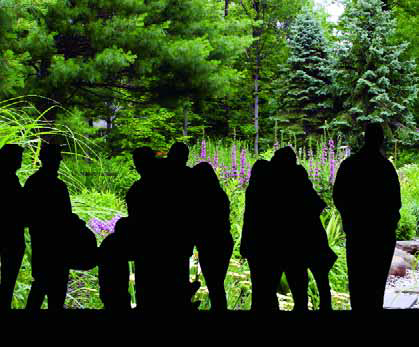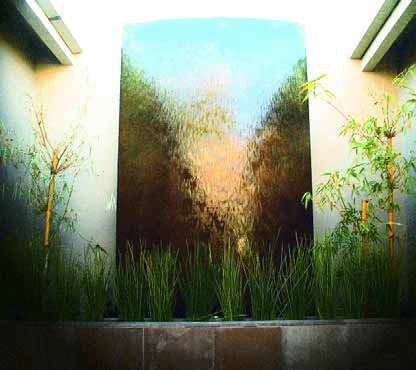Landscape, Plants, Hardscape & Decks
Recently, much has been written and discussed in our local Los Angeles media - newspapers, magazines, television - about an influx of architectural styles to our area that "just don't fit in" and are generally thought of as being a blight on our collective landscape. This isn't anything new, of course. I recall similar dustups in the 1970s and '80s when the stylistic serenity of old, established neighborhoods was being disrupted by the insertion
Recently, much has been written and discussed in our local Los Angeles media - newspapers, magazines, television - about an influx of architectural styles to our area that "just don't fit in" and are generally thought of as being a blight on our collective landscape. This isn't anything new, of course. I recall similar dustups in the 1970s and '80s when the stylistic serenity of old, established neighborhoods was being disrupted by the insertion
With spring upon us, calendars of local events are filling up with garden tours of all shapes and sizes. From large estate tours and special events at botanical gardens to tours of wonderful neighborhoods staged by local garden clubs, there's much to be seen while wandering through the grounds and yards and viewing the work of other designers and architects. I've always enjoyed these tours and learn something from each and every one, whether it's about a new plant or plant combination or an installation technique shared by a generous designer or installer who's on hand for that purpose. On a completely business note, I also have to say that some of my best-ever
With spring upon us, calendars of local events are filling up with garden tours of all shapes and sizes. From large estate tours and special events at botanical gardens to tours of wonderful neighborhoods staged by local garden clubs, there's much to be seen while wandering through the grounds and yards and viewing the work of other designers and architects. I've always enjoyed these tours and learn something from each and every one, whether it's about a new plant or plant combination or an installation technique shared by a generous designer or installer who's on hand for that purpose. On a completely business note, I also have to say that some of my best-ever
As much as I love cold weather, I have to concede that we experienced way too much of a good thing this past winter. Long periods of extremely cold weather are the norm in many other parts of the country, and plants survive. Here, however, our local plants may be accustomed to surviving the isolated sub-freezing night, but sustained, frosty temperatures lasting nearly a week are something they weren't meant to handle. I'm sure you've seen the results of our cold snap in the news: Much of the state's citrus population - yes, coincidentally, the wonderful treats I wrote about in last month's column - has sustained long-term damage and the trees in many cases will take two years and more to recover. And that doesn't just affect us here: The rippling effects will be felt in
As much as I love cold weather, I have to concede that we experienced way too much of a good thing this past winter. Long periods of extremely cold weather are the norm in many other parts of the country, and plants survive. Here, however, our local plants may be accustomed to surviving the isolated sub-freezing night, but sustained, frosty temperatures lasting nearly a week are something they weren't meant to handle. I'm sure you've seen the results of our cold snap in the news: Much of the state's citrus population - yes, coincidentally, the wonderful treats I wrote about in last month's column - has sustained long-term damage and the trees in many cases will take two years and more to recover. And that doesn't just affect us here: The rippling effects will be felt in
For years, I refused to eat tangerines and oranges because I hated the seeds. It was too much work to peel off the rind and then sift through the sections and pull out the seeds before finally getting to the juicy, delicious part of the fruit. I opted instead to get my Vitamin C from other sources. One winter several years ago, my attitude changed after I was handed a Satsuma tangerine. Surprised at how easy it was to peel and even more stunned by the absence of seeds, I savored the fruit's sweetness and enjoyed a more natural form of vitamin intake. In fact, I found myself devouring
For years, I refused to eat tangerines and oranges because I hated the seeds. It was too much work to peel off the rind and then sift through the sections and pull out the seeds before finally getting to the juicy, delicious part of the fruit. I opted instead to get my Vitamin C from other sources. One winter several years ago, my attitude changed after I was handed a Satsuma tangerine. Surprised at how easy it was to peel and even more stunned by the absence of seeds, I savored the fruit's sweetness and enjoyed a more natural form of vitamin intake. In fact, I found myself devouring
Many watershapers have a single-minded focus, doing all they can to deliver quality shells and surrounding decks to their clients. Quite often, however, that narrow focus means that inadequate space is left for planting - a problem I face quite often as a landshaper. It's clear in many cases that no thought at all was given to the landscape - and certain that no design professional was consulted before laying out and installing the hardscape. The result all too often is that there simply isn't enough room to allow for good-size planter beds. I often find myself rolling my eyes and lamenting the missed opportunities to
Many watershapers have a single-minded focus, doing all they can to deliver quality shells and surrounding decks to their clients. Quite often, however, that narrow focus means that inadequate space is left for planting - a problem I face quite often as a landshaper. It's clear in many cases that no thought at all was given to the landscape - and certain that no design professional was consulted before laying out and installing the hardscape. The result all too often is that there simply isn't enough room to allow for good-size planter beds. I often find myself rolling my eyes and lamenting the missed opportunities to

















